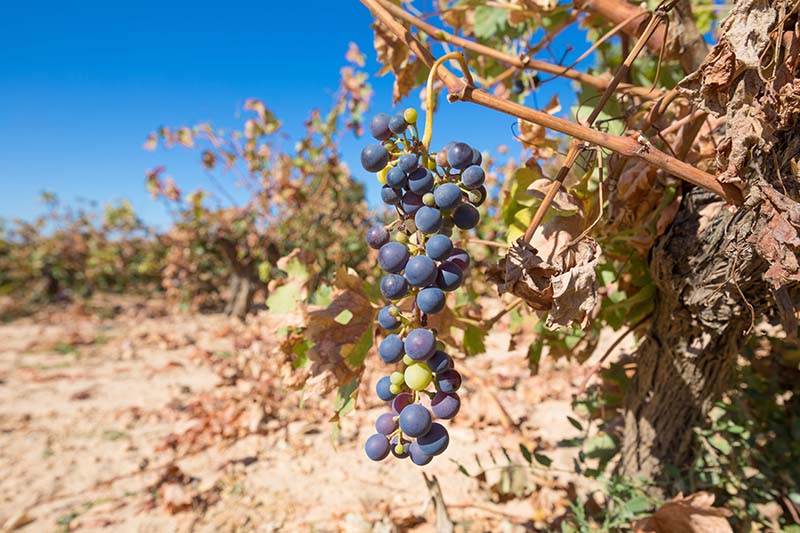Too many hot, red flames have burned through California wine country destroying vines and potential delicious vintages. Temperatures during harvest season in the mountains of Spain are not the same as last year. Wine makers are not trying to get political — but climate change is affecting their crops and the wines you’re drinking.
The Intergovernmental Panel on Climate Change reported that temperatures will increase between 3.6 and 4.5 degrees Fahrenheit by the end of the century, and this is affecting how wine grapes grow. How can those in the wine industry react to this change? Technology can help. Let’s examine.
The regions most at risk
Yes, it’s getting warmer, but the weather is also becoming more unpredictable. This makes it harder for vineyards to protect the grapes and know when exactly they’ll ripen.
Many winemakers across the globe are already living through and dealing with climate change. But some regions are more vulnerable than others.
First, in the United States, it’s California that’s dealt with wildfires.
In California, if a wildfire runs through a vineyard, it can take five years before grapes can grow on the land again, essentially devastating the future of that vineyard. If there’s a drought or a late frost, that vintage can be ruined, too.
For example, Tom Eddy Winery lost 80% of its 2017 vintage after a fire that burned 20 miles from Calistoga in Napa Valley to Santa Rosa. Losing the vintage equates to a $2.5 million loss for the brand.
Tom Eddy is not the only winery trying to remove what the industry calls “smoke taint” from its grapes. Smoke taint is a specific flavor profile that affects the grapes after a fire. Most wineries are forced to toss the tainted fruit. With customers caring more and more about what goes into their wine, the extra smoke taint isn’t helping the brands.
Some wine distributors have even tried to reject California brands that are sending wine with smoke taint. Wineries have responded with lawsuits, stating the distributors are required to sell the wine.

Here’s how climate change could affect wine growing regions in Western Europe by the year 2050. Photo courtesy WineFolly.com.
How climate change affects harvests
Abroad, Burgundy’s Pinot Noir is suffering from the effects of climate change. The famous grape is sensitive to temperatures.
“It is perversely the most prized grapes that make the premium wines that are the most sensitive,” John Holdren, co-director of the science, technology, and public policy program at Harvard’s Kennedy School told Penta. “So you tend to lose suitability for those grapes before you lose the capacity to grow grapes at all.”
Traditionally, white grapes would ripen before red. With rising temperatures, most grapes are ripening quicker, but the reds are particularly speeding up. This means the white and red are ripening at the same time. This causes vineyards to have to make tough choices between which grapes to prioritize during harvest. The wines they decide to leave until later will not produce as quality of a wine.
So for example, if the harvest was previously the third week of September for whites, and the first week of October for reds, now they could both be the second week of September. This also causes labor issues.
How brands can protect themselves
While harvest season might have felt more formulaic in the past, moving forward winemakers will need to be more flexible.
Unfortunately, climate change is not going away, so investing in technology can help. Tech advances can help wine suppliers:
- Better manage the vineyard, including allocation of labor.
- Add the necessary chemicals for growing or fermenting. Sometimes changes to grapes during growing can be counteracted by changes in the wine production process.
- Know the right time to harvest.
In addition, predictive analytics and modeling could also help you identify future areas of investment. Many areas that are not prime wine regions now could be in the future because of temperature changes. For example, Southern England is one area that is currently not a hotbed of wine production, but could become one in the next 30 years.
You’ll also want to use scientific information to help educate yourself and your staff. For example, this year is the hottest July on record, which can mean harvest is coming early. By keeping tabs on climate data and examining trends through data visualization, you’ll be better able to make informed decisions about your harvest and future production.
Few tips are as good as just being out in the vineyard yourself. Walking around, testing the grapes and seeing where things are at on a day-to-day basis will help you and your staff prepare and take preventive measures.
- 87% of Utilities Have Experienced at Least One Data Breach in Last Three Years - February 5, 2024
- Can Drones Lower Your Next Utility Bill? - January 10, 2024
- Onshore Wind Farms Are The Next Big Thing In Renewable Energy - December 6, 2023




